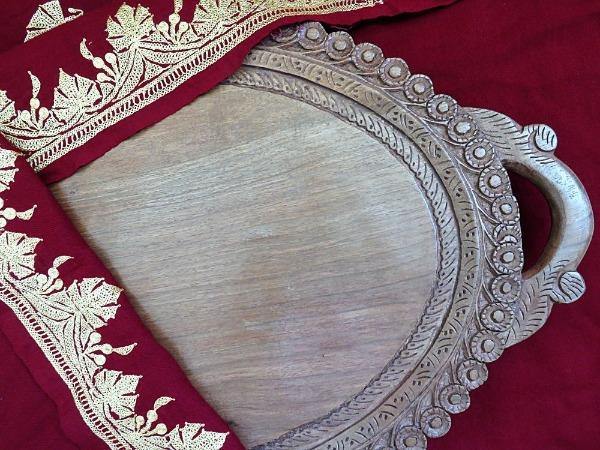
Carved Legacy
By looking at that old, outworn room, nobody could have ever imagined that it is actually a treasure house of art. Aptly said, looks are deceptive at times.
Quietly sitting in one corner of a room, engrossed and lost in his own world. Eyes deeply focused in giving a proper cut with that chisel and wooden mallet. It's a sight to behold. The design that is getting carved on this beautiful artifact leaves you spellbound.
And my heart says, take this trophy and display it to the whole world. Let the people from all parts of the world know, what magnificent piece of art can be created by these torn hands. These hands are meant to be worshipped, as they are the true custodians of our heritage. Myriad of such gems are just waiting to be unveiled.
So lets get to know today about one such art known as Walnut Wood Carving. This art is only found in the lap of mighty Himalayas. Yes, it belongs to Kashmir only. Because its here only, where you can find the walnut wood trees growing in abundance, at an altitude of 5500-7500 feet above the sea level.
Even this art came to Kashmir from Persia about 600-700 years back, just like Paper Mache. Earlier wood carving used to be done mostly on pillars, doors, walls of mosques, palaces and other royal buildings. But with time it became immensely popular, thus leading it other beautiful creations such as trays, bowls, furniture etc.
Generally the wood from the trunk is used, which is lighter in color as compared to the wood from root which is almost black and is more expensive. Because of its durability, closed grain and texture, this wood is ideal for carving. Walnut wood has its own natural sheen which comes out stunningly when polished with wax or lacquer.
Trees which don't bear fruits for few years and are matured to an age of 300 years, are cut down. Then the wooden sheets of specific dimensions are prepared from them and are kept for natural seasoning for 6 months to 3 years. From here, these wooden sheets go into the hands of a carpenter, who prepares the structure of an artifact. And finally it reaches its real destination. Yes, you guessed it right, the highly skilled artisan also known as Naqqash. This artisan then uses his imagination and applies it on this crude object, thus creating a mesmerizing art piece.
Five main styles of carving are :-
1) Deep carving (Vaboraveth): Also known as raised work and depth of carved area is upto 5 inch. The most common designs created are of dragons or lotus motifs.
2) Semi carving (Padri): Usually this type of work is not very deep.
3) Shallow carving (Sadikaam): This type of carving is normally done all over a flat surface.
4) Undercut (Khokerdar):This type comprises multi-layers that can exceed upto seven, with an intent to give a three dimensional effect to a motiff. In this the edges are rounded off, instead of sharp and straight e.g a jungle with layers of flora, intertwined, rabbits hopping from bushes, birds flying et al.
5) Open or Lattice work (Jalidahr): Also known as cut- work or see through Jali work. Alacrity among artisans can be seen for this type of carving. Its mostly done on a furniture like a back of a chair.
The motifs on the wooden artifacts are inspired from the various natural wonders of Kashmir, Chinar leaves, Vine leaves, flowers like Lotus and Rose.
With IndicHues, we are making an endeavor to showcase the masterpieces created by our country's craftsmen. After reading this blog, you can very well understand how long and tedious the whole process is. Karigars (craftsmen) painstakingly create these artifacts before its reaches your abode.
Join us for the true spirit of "Make in India" and "Vocalforlocal". Lets hold the hands of our artisans , as they doing their every bit to preserve our legacy.
By:-Ruchi
